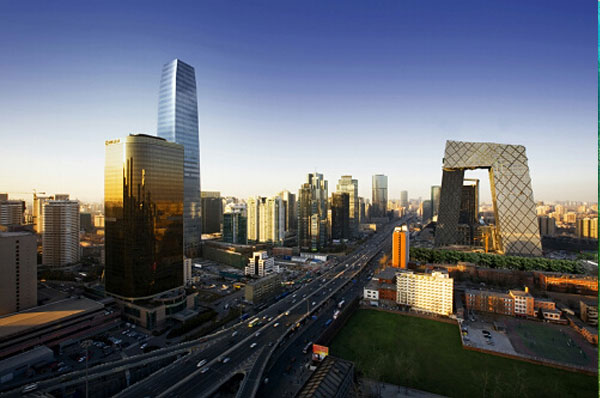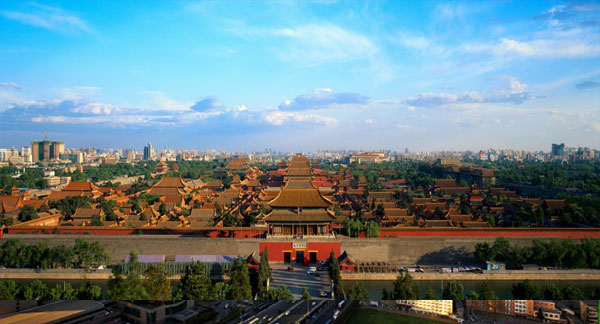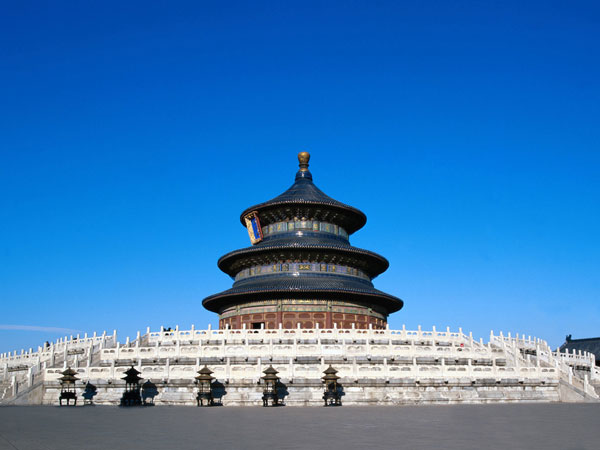Beijing
- Geography
- Climate
- Population
- Economy
- International Conference and Exhibition
- Technology and Education
- Foreign Communication



Beijing is not only the capital of the People’s Republic of China, but also the political and cultural center of the country. It is famous as both the world’s ancient capital and the modern international city.
 Geography
Geography
Beijing is located in the northwest of the North China Plain and adjacent to the Bohai Bay
Area
The total area of city is 16410.54 square kilometers.
Altitude
The average elevation is 43.5 meters.
 Climate
Climate
Beijing belongs to the typical warm temperate zone with a semi-humid climate. It has four distinctive seasons, with short springs and autumns while summers and winters are always long. The summer is characterized by high temperature and a lot of rain, while the winter is cold and dry. The annual precipitation mainly occurs in summer.
Population
The city has a permanent population of 22 million people. (statistics of early 2010 )
 Economy
Economy
Beijing is a comprehensive industrial city, which maintain in the front of the comprehensive economic strength of the country. In 2010, the gross domestic product (GDP) reached RMB 1.377794 trillion Yuan and the per capita GDP was RMB78507 Yuan (second at provincial administrative region of mainland, just behind Shanghai).
Industry
By the end of 2009, there are 6891 above-designated-size industrial enterprises in Beijing. Among which, telecommunication equipment manufacturing, transportation equipment manufacturing, electric heating power producing and supplying, ferrous metal smelting and pressing, petroleum processing and coking and nuclear fuel processing became the key industries which support the industrial economy of Beijing.
Finance
Beijing, the most important financial and commercial centers of China, is the home to headquarters of Bank of China and China’s big-name financial institutions and insurance companies. At the same time, many headquarters of the large state-owned enterprises are gathered here. In addition, a large number of outside multinational companies have established their regional headquarters of China in Beijing.
Tourism
Beijing is full of rich resources of tourism and scenic spots. Among which, the Forbidden City, the Great Wall, the Peking Man Site at Zhoukoudian, the Temple of Heaven, the Summer Palace and the Ming Tombs are all on the list of world heritage. It is the city that possesses the most of world heritage (6 spots). There are 187 A-level and above scenic spots, including the royal garden - the North Sea, and the Great Wall at Badaling and Mutianyu. By the end of 2009, there were 815 star-grade hotels, the number of foreign tourists entering Beijing reached 4.125 million, the foreign exchange income from this industry reached US$4.36 billion, the number of domestic tourists reached 160 million, spending a total of 214.45 billion Yuan.
Beijing is also called "the city of museum". The number of the registered museums can get 151, which are the second in the world's (listed next to London). In addition, the National Museum is largest one in the world and the Palace Museum is one of the five major museums.
Infrastructure Facilities
Urban infrastructure is highly valued in the urban construction which is always in the priority development.
An annual investment of over hundreds of billion Yuan input in fixed assets has not only spurred the rapid development of the local economy, but also laid a solid foundation for future development.
Transportation
Highway
The road network construction of city is primarily rectangular ring. By the end of 2009, the mileage of highway is 20670 kilometers, the mileage of urban road is 6206 kilometers, and the length of rail transit line is 228 kilometers. Besides, there are 381 overpasses.
Railway
Beijing is one of the largest railway junctions, where many railway lines converge. The high-speed railway of Beijing Hong Kong which is the longest of China will be completed in 2012. As to the international railway transport, the train leaves for the city of Russia, Mongolia, North Korea and Vietnam all departing from Beijing.
Aviation
Beijing is the converging center of the air lines of the country. Beijing Capital International Airport, which is the largest international airport in Asia, has opened more than 200 international and domestic flights to the major countries and regions of the world as well as the most domestic cities.
Post and Telecommunication
Beijing has established postal communications with virtually all countries and areas around the world. International Direct Dial covers more than 200 countries and regions. In addition, new value-added telecommunication services like data- communication, multimedia, Internet and mobile phone messages have developed rapidly.
 International Conference and Exhibition
International Conference and Exhibition
Beijing is in the global top 10 of the international conference city (released by International Congress and Convention Association (ICCA) in 2010). Beijing has 21 exhibitions that have been accredited by the Union of International Fairs (UFI). There 51 international large-scale exhibitions are held in Beijing from January to July in 2011.
Beijing international motor show with the four "old" motor shows of Detroit, Frankfurt, Geneva and Tokyo has been listed the five motor shows in the world. The scale of the Beijing motor show is the largest in the world.
 Technology and Education
Technology and Education
Beijing has the nation’s biggest science and technology research bodies. Since 1998, international week of Beijing high and new technology industries which is the large international activities on the theme of high and new technology industries are held successfully every year.
Beijing is the city where the education is most advanced. It is also the first city which entered the stage of instituting the higher education. By the end of 2009, the regular higher education institutions amounted to 88, with 52 higher education institutions and 117 technology and research institutions to train postgraduates. The most famous ones like Peking University, Tsinghua University, Renmin University of China and Beijing Normal University.
The national library of China which is the first big in Asia and the third in the world is also located in Beijing. The library of Chinese Academy of Sciences, and Beijing University library are listed in the five big libraries of China.
 Foreign Communication
Foreign Communication
Beijing enhances its communication with other countries and districts in the areas of economy, trade, science and technology, education and culture. The communication between government and social groups are friendly and active, and it also has formed a layout with multi-aspect and multi-level opening-up in a wide range of areas.
EXPLORE
RELATED WEBSITE



